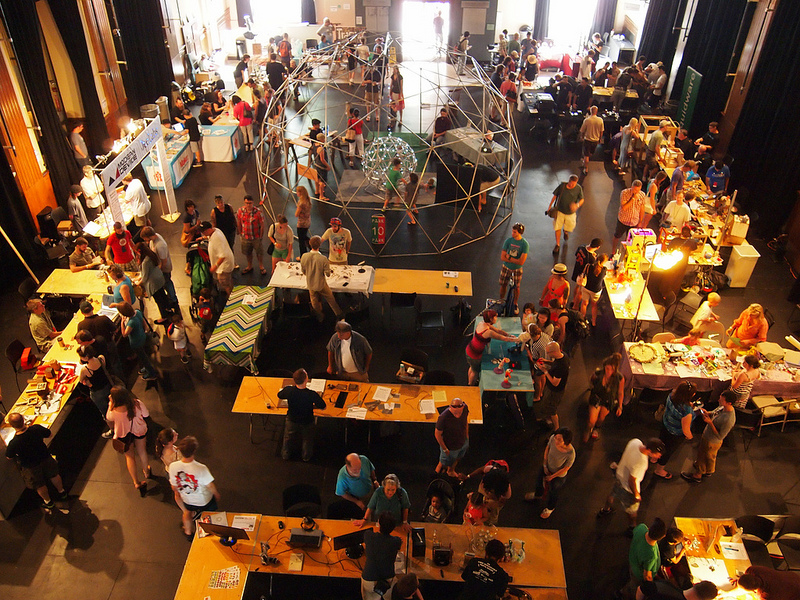The Rascal at Maker Faire Rhode Island 2012
On Saturday, August 11th, I drove down to Providence, Rhode Island for this year's Maker Faire. It lasted from noon until pretty late into the evening. The last two years, it's been outside; last year I had a table in the sun, which would have proved grueling even if I hadn't spent 11 continuous hours talking to people. I sounded like Doc Rivers by the end of it.
This year, the event was inside the Pell Chafee Performance Center, which is next door to AS220, an enormous artists' space in Providence, which in some way helped put on the event. As usual, the Maker Faire was filled with all sorts of interesting stuff. My home makerspace, Artisan's Asylum, was well represented with three different booths (Dan, Aleks, and Glen with their crazy tank, Arcbotics, and me). You can see the Rascal booth on the far left of the picture below; I'm sitting next to a red Sparkfun box.
I was adjacent to an interesting character by the name of Jadrian Miles, who has created Fibbly, which is both math and art. Jadrian drew a crowd for hours (mostly of kids who hadn't been run through the math hate machine yet).

(Photo from Chris Connors under Creative Commons license. Thanks, Chris!)
What's great about Maker Faire
From a monetary perspective, Maker Faire is always a lousy deal for Rascal Micro. It's a lot of work to prepare demos, and most of the visitors don't really know what I'm talking about when I show them the Rascal. (Overheard this year: "I don't understand anything here other than that cardboard airplane.")
Still, I think the Maker Faire is the most direct opportunity I have to push society in a healthy direction. The message that I try to pass on at Maker Faire is that no matter who you are, you can learn to make stuff. You don't have to sit on the couch and watch other people have adventures on TV. Sure, you won't turn into Leonardo da Vinci overnight, but with a couple evenings and the cost of a month of cable, you can get started. You can learn to design stuff for a 3D printer or build some simple furniture or fix your bike. Keep at it, and you can build a robot or a suit of armor or whatever you want.
We're living in era where the building blocks for making stuff are more widely available than ever before. For $30, I can get a microcontroller board similar in capabilities to the Apple II. The open source software movement has been developing a huge body of software that covers a wide swath of human endeavour, and now the open source hardware movement is taking off. Outside the areas of software and electronics, the internet is giving rise to niche forums for everything from knitting to old woodworking machines. I feel lucky to have the chance to take part in Maker Faire.
Time for you to grab some friends and head over to your local hackerspace!
